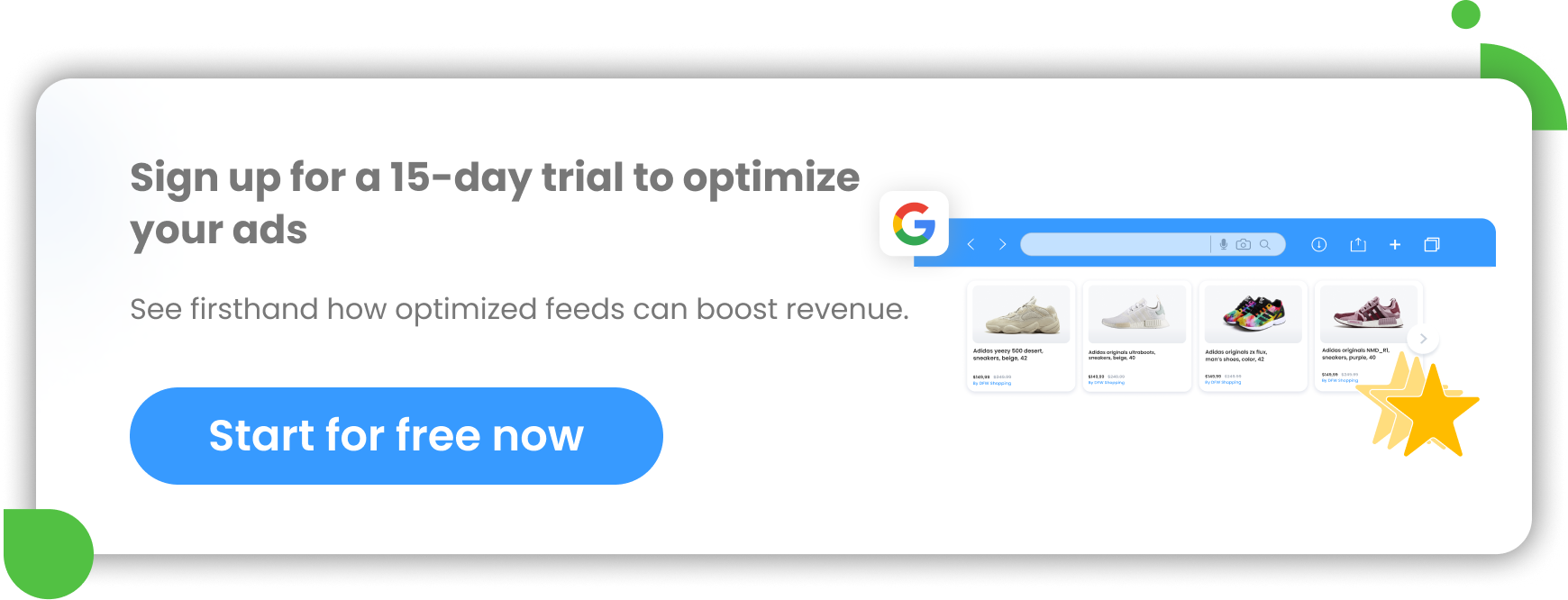There are 3 million advertisers on Facebook. The reason why there are so many of them is because it is an effective platform. It presents a great opportunity to connect with your intended audience and motivate them to take action, such as making a purchase.
However, it's important to note that not all of the millions of advertisers on the platform achieve success. Many fail to pinpoint their ideal customer and effectively target their desired audience.
So, should you try advertising on Facebook? Is it possible to stand out from the crowd?
The real question isn't whether you should advertise on Facebook, but rather how to execute your advertising strategy in a way that ensures a worthwhile ROI for your time and money.
What is a Facebook ad strategy?
A Facebook strategy is a plan for how a business or organization uses Facebook to reach its goals. It involves things like deciding who to talk to, what to say, how much to spend, and how to know if it's working. The goal is to use Facebook in a smart way to connect with people and get good results.
How to create a Facebook ad strategy? Starting points
When it comes to Facebook Ads, you can’t randomly create and run ads. It's like pouring money down the drain on underperforming campaigns.
Without a solid plan or strategy, you'll never understand why some things fail and others succeed, optimize your ads effectively (getting the most out of your budget) or scale your campaigns while maintaining outstanding results.
Here's how you can create a Facebook strategy that will set you up for success. Think of it as a Facebook ad strategy template:
Choose your campaign goals
Your campaign's objectives will shape your overall strategy and allow you to refine your targeting as the campaign progresses.
1. Begin by identifying the specific product or service you wish to promote, then delve into its key features that you want to emphasize in your ads. This will enable you to highlight specific benefits and provide detailed ad descriptions.
2. Afterward, define the objectives you aim to achieve with your campaign. These objectives represent the specific actions you hope to stimulate from your audience, such as event sign-ups or product purchases.
3. Translate these goals into one of the following Facebook ad objectives, which Facebook will use when seeking out individuals to display your ad to:- Awareness: Increase awareness of your brand/product.
- Traffic: Direct individuals to another page on Facebook or the internet, such as a Facebook event, your website, or your app
- Engagement: Boost engagement on Facebook, such as page likes, event responses, or messages
- Leads: Gather leads through forms, messages, calls, and web pages
- App promotion: Motivate individuals to install your app or take action within it
- Sales: Generate interest in your product and persuade viewers to make a purchase either through Facebook or on your website.
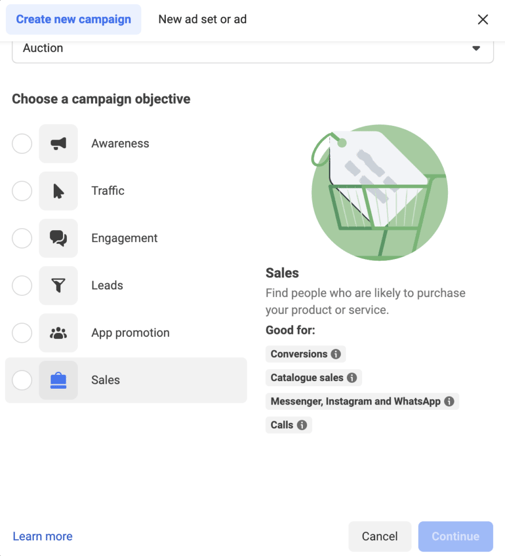
Create a funnel
You might want to craft ads with diverse objectives, such as driving website traffic, securing email sign-ups, or generating product sales. Each of these ads targets individuals at different stages within the sales funnel.
Therefore, it's crucial to establish your sales funnel before launching your ads. The sales funnel categorizes the various connections you have with your entire audience and organizes these connections into distinct tiers.
Certain individuals are prepared to make a purchase immediately (at the bottom of the funnel), whereas others require evidence of your product's quality (at the top of the funnel).
A funnel represents the journey prospects embark on from initial awareness to eventual conversion.
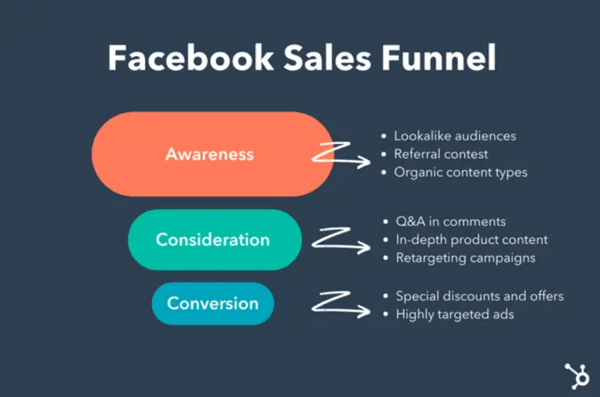
Source: Hubspot
What is the benefit of designing a sales funnel?
Sales funnel is considered one of the most effective Facebook ad strategies. It makes it easier to deliver targeted ads to your audience at the appropriate stage of their journey.
For instance, showing a product purchase ad to someone who is just discovering your business may not be suitable, whereas inviting them to join your email list could be more relevant.
By implementing a sales funnel, you know which ads to present to prospects as they progress through the funnel, ultimately enhancing the performance of your ads.
Choose your budget
To avoid overspending, it's crucial to decide on your budget before investing in advertising, as ad costs can escalate quickly.
As of February of 2024, the average cost per click for Facebook ads is standing at approximately $0.774 (source: Revealbot). While this figure may vary based on the specific campaign, it serves as a useful reference point when determining the following budget components:
- Monthly budget: Assess your overall marketing budget and determine the portion allocated to Facebook ads each month.
- Campaign budget: Calculate the amount you intend to allocate to this particular campaign.
- Campaign duration: Select the duration for running your Facebook ad campaign, taking into account both the monthly ad spend and the total campaign spend.
Identify your audience
For your ads to be impactful, it's essential to ensure they reach the appropriate audience. This involves identifying the specific individuals you intend to target with your ads.
When defining your target audience, consider those most likely to require your products or engage with your services. Factors to consider include age, gender, location, occupation, purchasing behaviors, interests, and additional relevant criteria.
This comprehensive understanding will provide a clear profile of your target audience.
Then, take advantage of Facebook's ability to customize target audiences based on various factors. Here are some popular targeting strategies for you to explore:
- Site or app retargeting
- Demographic targeting
- Behavior or interest targeting
- Custom audience targeting
Create your Facebook ads
Decide how you want your ads to look and where you want them to show up.
1. Begin by defining your ad placements. Meta gives you lots of options for where your ads can be seen:
- The main Facebook feed
- The right column on the web feed
- Facebook Marketplace
- Facebook's video feed
- Facebook Stories and Reels
- Facebook Messenger inboxes
- Facebook Business posts and menus
- And more!
Normally, Facebook will use something called Advantage+ ad placements, which means it will pick the best places to show your ad without you having to be very detailed. However, you can be very specific if you want. You can also change the content for each place where the ad will be shown if you want to have complete creative control.
2. Then, select the type of ad format you want:
- Photo: An image with a text caption
- Video: A video with a text caption
- Story
- Messenger
- Carousel: A series of up to 10 images or videos with individual links
- Slideshow: A sequence of images with motion, sound, and text
- Collection: A video or image with three smaller images
- Playable: An interactive preview of your app
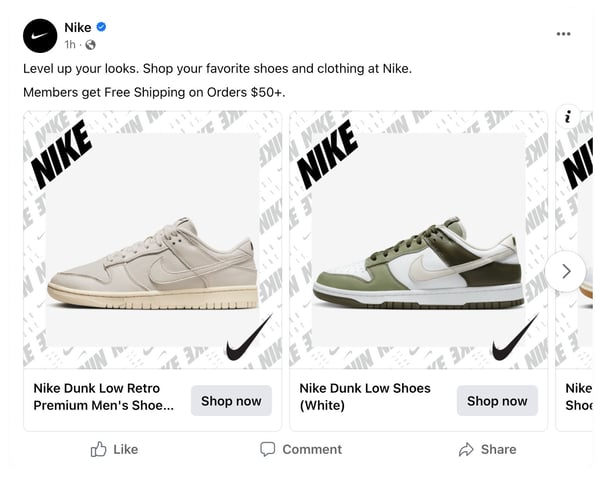
Go with the flow as the campaign progresses
While running your Facebook campaign, you might find it necessary to adjust your audience or targeting settings in order to increase conversions and improve your cost-per-click, and this is a typical part of the process. It's important to stay adaptable and review your strategy if it's not yielding the desired outcomes.
15 Facebook ad strategy elements to consider
1. Set up Meta Pixel
Installing a Meta pixel should be an essential element of your Facebook strategy that allows you to optimize your digital marketing efforts. By embedding the Meta pixel code into your website, you gain valuable insights into user behavior, track conversions, and build targeted audiences for your advertising campaigns.
This allows you to measure the effectiveness of your ads, retarget website visitors, and create lookalike audiences to expand your reach. With the data collected from the Meta pixel, you can refine your advertising strategy and improve ad performance.
In summary, installing Meta Pixel allows you to identify the individuals engaging with your business and evaluate the effectiveness of your Facebook ads.
![]()
2. Set up dynamic Facebook ads (Meta Advantage+ Catalog Ads)
Dynamic product ads are a highly profitable strategy for eCommerce websites. These ads offer a personalized approach by displaying tailored content based on users' interactions with the website, leveraging the capabilities of the Facebook Pixel for customization.
Combining multi-product ads with Facebook Custom Audiences allows you to create dynamic product ads, presenting a carousel of items that a person previously viewed on the website. For instance, if someone browsed black trekking boots on Amazon, they could be targeted with a dynamic ad featuring those exact products.
To be able to run multi-product Facebook ads, you need to upload the product feed to the Commerce Manager.
The effectiveness of showing dynamic ads to website visitors or mobile app users depends on the presence of the Facebook Pixel on the website and/or the Facebook SDK in the mobile app. However, users must also consent to the usage of the Facebook Pixel, which may be limited due to recent privacy settings such as those introduced by Apple for iPhone users.

3. Combine Facebook Ads with Google Shopping Ads
Google and Facebook stand as the essential combination that every advertiser should take into account. In 2023, nearly 46% of all online advertisers utilized both of these major channels at the same time, as indicated by the Multichannel Marketing Report 2023.
The successful approach of leveraging both platforms simultaneously has seen substantial adoption over the years, with this trend showing an upward trajectory - this year, even more advertisers have embraced this strategy compared to last year (44%).
Source: Multichannel Marketing Report 2023 | DataFeedWatch
Facebook has an undeniable impact on advertising strategies. However, your approach should be tailored to your campaign objectives and the specific audience segment you aim to reach.
For instance, an individual searching for a particular product, such as a new mobile phone, is probably prepared to make a purchase and is in the process of researching available options. In this scenario, focusing on the appropriate keywords and crafting Google ads aligned with them might be more effective than directing efforts towards leads on Facebook, who only look for inspiration.
Read also: 10 Google Shopping Ads Examples To Copy for Retail Campaigns
4. Try setting both budget types
On Facebook ads, you can choose between two types of budgets: Daily and lifetime.
Your daily budget is how much you're willing to spend each day on an ad, while your lifetime budget is the total amount for the whole campaign. A smart strategy is to use both types of budgets.
Some ads might work better with a lifetime budget, while others do better with a daily budget. For instance, if you have a week-long sale, it's best to use a daily budget to make sure people see your ad every day.
On the other hand, if you're offering a limited-time free trial or product, a lifetime budget might be a better choice. This way, when there's lots of interest, Facebook will spend more of your budget during those peak times to help you reach your goals.
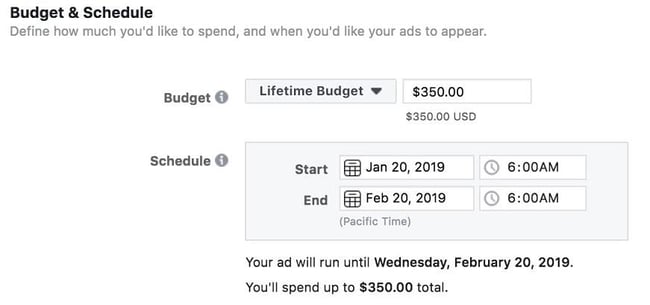
Testing out both options is a great way to figure out what works best for your ad campaigns and get the best results for your business.
5. Optimize your product feed
Optimizing your product feed is a crucial aspect of a successful Facebook marketing strategy. By ensuring that your product feed is accurately updated with high-quality product images, detailed descriptions, and all relevant product attributes, you can improve the visibility of your products in Facebook's dynamic ads and marketplace.
Utilizing custom labels, optimizing titles and descriptions with relevant keywords, and providing accurate pricing and availability information are essential for maximizing the effectiveness of your product feed.
Availability mapping

Source: DataFeedWatch
Price/ Sale price mapping

Source: DataFeedWatch
Title mapping

Source: DataFeedWatch
Additionally, regularly reviewing and updating your product feed to align with current trends and customer preferences can significantly impact the performance of your Facebook advertising campaigns and ultimately drive more sales.
6. Set up multi-product ads for eCommerce
Facebook multi-product ads are like a bunch of little ads in one big ad. There are a few good things about them:
- They give customers more choices.
- You pay for one ad, but you get to show lots of products.
- You can highlight many benefits of one product.
There was a study by Adobe that showed using these multi-product ads can bring some really good results:
- More people clicking on the ad, up to 300% more!
- It costs less for each click, up to 35% less.
- It's cheaper to get each new customer, sometimes 250% cheaper!
The key to success with this type of ad is to have an optimized product feed.
7. Take advantage of carousel ads
According to Digiday, carousel ads outperform static sponsored posts on Facebook by 10 times in driving click-throughs.
Effective carousel ads maintain a cohesive narrative across their slides, with the option to use up to 10 slides for storytelling.
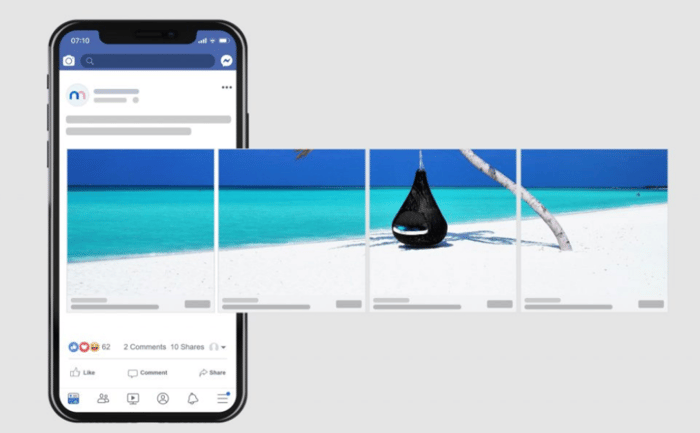
Source: Pinterest
It's crucial to note that the first image in a carousel ad is pivotal to its success, as it must captivate the audience. An innovative approach for carousel ads involves guiding the audience through product usage processes, particularly beneficial for software businesses or products with multi-step setups. For instance, a company offering home improvement tools could employ Facebook carousel ads to showcase the entire process of using their products, from initial setup to the final result.
This is another type of ad where the base is your product feed. Your ads will only be effective if you include all the necessary attributes in your feed and optimize them.
8. Prepare an effective remarketing strategy
After attracting visitors to your website and engaging them on specific landing pages, it's crucial not to miss the opportunity to bring them back. You can easily do it through retargeting ads using Facebook Custom Audiences.
It’s best to start with retargeting your landing page visitors. Why?
- Landing page visitors are already familiar with your brand.
- They have shown interest in a particular product or use case.
- You can tailor landing page-specific offers to a targeted audience.
For example, if someone visited a landing page related to conversion rate optimization, you could set up a Facebook remarketing campaign to convert them from a lead to a client.
Remarketing ads tend to perform better than regular ads. In fact, research from Wordstream indicates that Facebook remarketing ads receive three times more engagement compared to standard Facebook ads.
When creating remarketing campaigns, it's crucial to segment your Facebook audiences into specific groups and tailor landing page-specific offers. Additionally, clearly highlight the benefits and provide a clear call-to-action, such as a Sign Up or Download button, to guide users on the next steps.
9. Run an effective upsell campaign
Adobe reports that 8% of eCommerce customers generate 41% of the total revenue in the industry. This means that these customers are returning ones.
Repeat buyers in the United States contribute to an average revenue per visit that is 497% higher than that of regular shoppers, indicating their value is quintuple. This data underscores the lucrative potential of upsell campaigns.
Upsell to existing customers holds significant untapped potential.
1. One strategy involves targeting individuals based on their previous purchases and offering related products. For example, a customer who purchases socks from an online clothing store could be presented with an offer for matching t-shirts.
2. Another strategy is reviving past customer relationships by highlighting a previously purchased product, coupled with a discount offer, can be an effective approach.
10. Find new clients using lookalike audiences
Typically, businesses initiate their Facebook advertising efforts by directing their campaigns towards a large pool of potential customers who have not yet shown interest (referred to as a large cold audience).
However, this approach often leads to suboptimal results for all parties involved, akin to deflating balloons. Facebook users are inundated with irrelevant ads, and this issue is exacerbated when the Facebook pixel, a vital tracking tool, is not functioning at its best. Irrelevant ads not only deplete advertising budgets but also contribute to a negative return on investment for the campaign.
Fortunately, it's possible to avoid this scenario. Instead of targeting random cold leads, you can focus on Facebook Lookalike Audiences that are composed of individuals whose profiles resemble those of your existing customers, increasing the likelihood of their interest in your offerings.
An effective Facebook Lookalike Audience strategy involves targeting individuals who closely resemble previous converters and customers. The process involves:
- creating a Facebook Custom Audience consisting of past converters
- then setting up a Lookalike Audience based on this Custom Audience
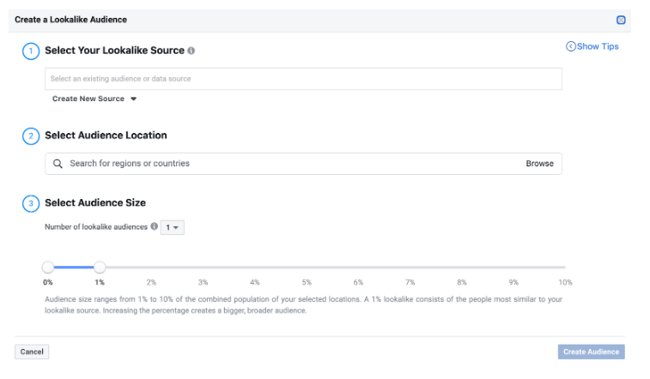
11. Leverage the power of social proof
You should use the power of social proof to enhance your main Facebook marketing strategy.
Social proof, such as review, ratings, customer testimonials, user-generated content, compelling user stories and influencer endorsements, can significantly impact the way your brand is perceived on Facebook and effectively amplify engagement.
By showcasing positive experiences and feedback from satisfied customers, you can build credibility, trust, and authority, ultimately influencing the purchasing decisions of your target audience.
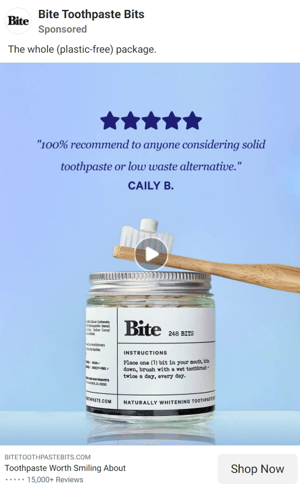
Source: The Social Shepherd
12. Create custom labels
Creating custom labels is a powerful strategy for optimizing Facebook advertising efforts, particularly when leveraging custom labels based on price and profit margin. These custom labels serve as invaluable attributes in product feeds, allowing marketers to effectively categorize, group, filter, and structure products for highly targeted ad campaigns.
By implementing custom labels based on price ranges, you can segment your products to align with specific pricing strategies. This segmentation enables you to tailor ad content and bidding strategies to different price brackets.
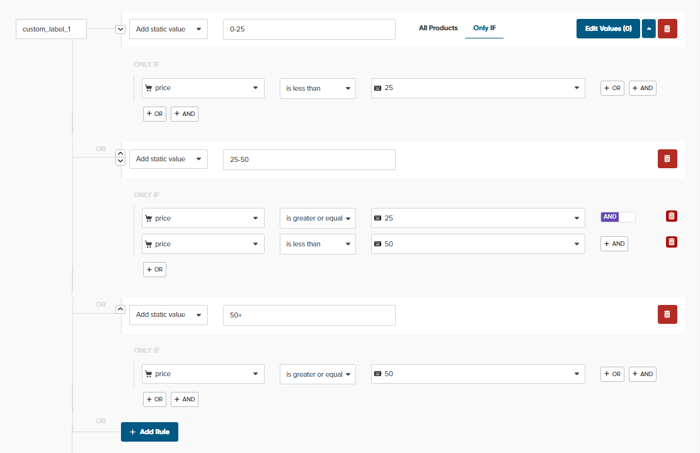
Custom label based on price | DataFeedWatch
Additionally, utilizing custom labels based on profit margins empowers you to prioritize and promote products with higher profitability, ultimately driving revenue growth and improved campaign performance.
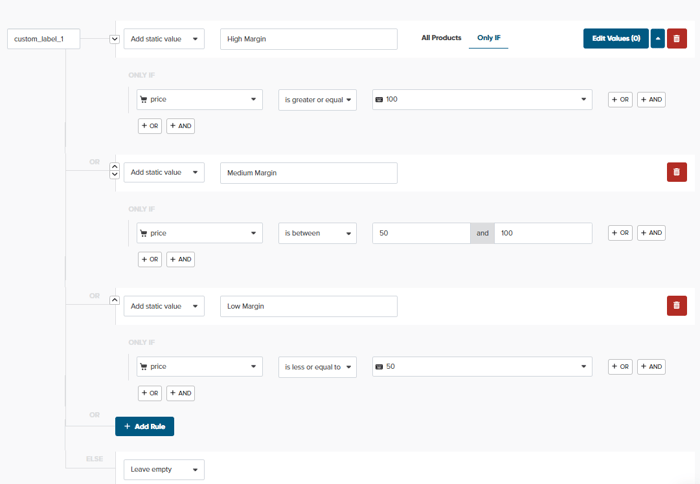
Custom label based on margin | DataFeedWatch
This level of granular segmentation ensures that ad messaging is relevant and compelling, leading to enhanced engagement and conversion rates.
13. Monitor ad campaign performance
To get the most out of your ad campaigns, you need to monitor their performances. That’s why ad monitoring is a crucial Facebook ad strategy for you to use. If you don’t watch your ad performance, you’ll miss opportunities to improve your ads and drive more revenue.
To monitor your ads correctly, you need to establish the metrics you want to monitor. Whether you want to analyze clicks, conversions, or something similar, you should know what you want to achieve. Once you’ve established your metrics, you can monitor them to see if your ads reach your goals.
The Facebook Ads Manager provides a comprehensive overview of ad performance, allowing you to measure key metrics such as results, spend, click-through rate (CTR), and more.
The insights side panel can also provide visual representations of your ad performance, offering valuable insights into the effectiveness of your campaigns.
14. Don’t forget to nurture your leads with fresh content
Many companies make the mistake of trying to sell to people who aren't ready to buy. Instead of pushing sales, it's better to give them helpful and interesting information that solves their problems. Be patient, and eventually, they will become customers.
Offer them valuable content that addresses their inquiries and resolves their challenges. This content should be concise, and engaging:
- Generate content and share it on Facebook.
- Encourage others to like and share the post.
- Consider boosting your Facebook post to expand its reach to a broader audience.
It's beneficial to run periodic lead nurturing content marketing campaigns, ensuring that your campaign remains relevant to different lead segments by creating multiple highly-targeted articles or guides around specific landing page topics.
15. Run contests & free giveaway campaigns
To drive Facebook ad clicks, provide something valuable. Facebook contests and giveaways are exceptionally captivating.
Your Facebook contests don't always need to be centered solely on sales. Instead, seek long-term advantages like heightened brand recognition and new leads entering your conversion funnel.
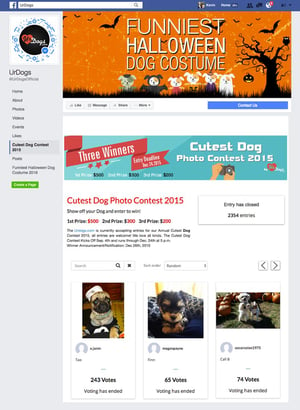
By setting clear goals, choosing attractive prizes, and creating compelling themes for the giveaways, businesses can drive increased participation and reach a wider audience. Determining the entry method and establishing rules for the giveaway are crucial steps to ensure a smooth and successful campaign.
Conclusion
In conclusion, crafting a compelling Facebook ad strategy is a multi-faceted task that requires a deep understanding of your target audience, and ongoing monitoring and optimization.
The examples in this article provide valuable insight into the different approaches and tactics that can be used to create effective Facebook ad campaigns.
We encourage you to share your thoughts and experiences in the comments section below as we value your insights and are eager to engage in a discussion about effective Facebook ad strategies.


